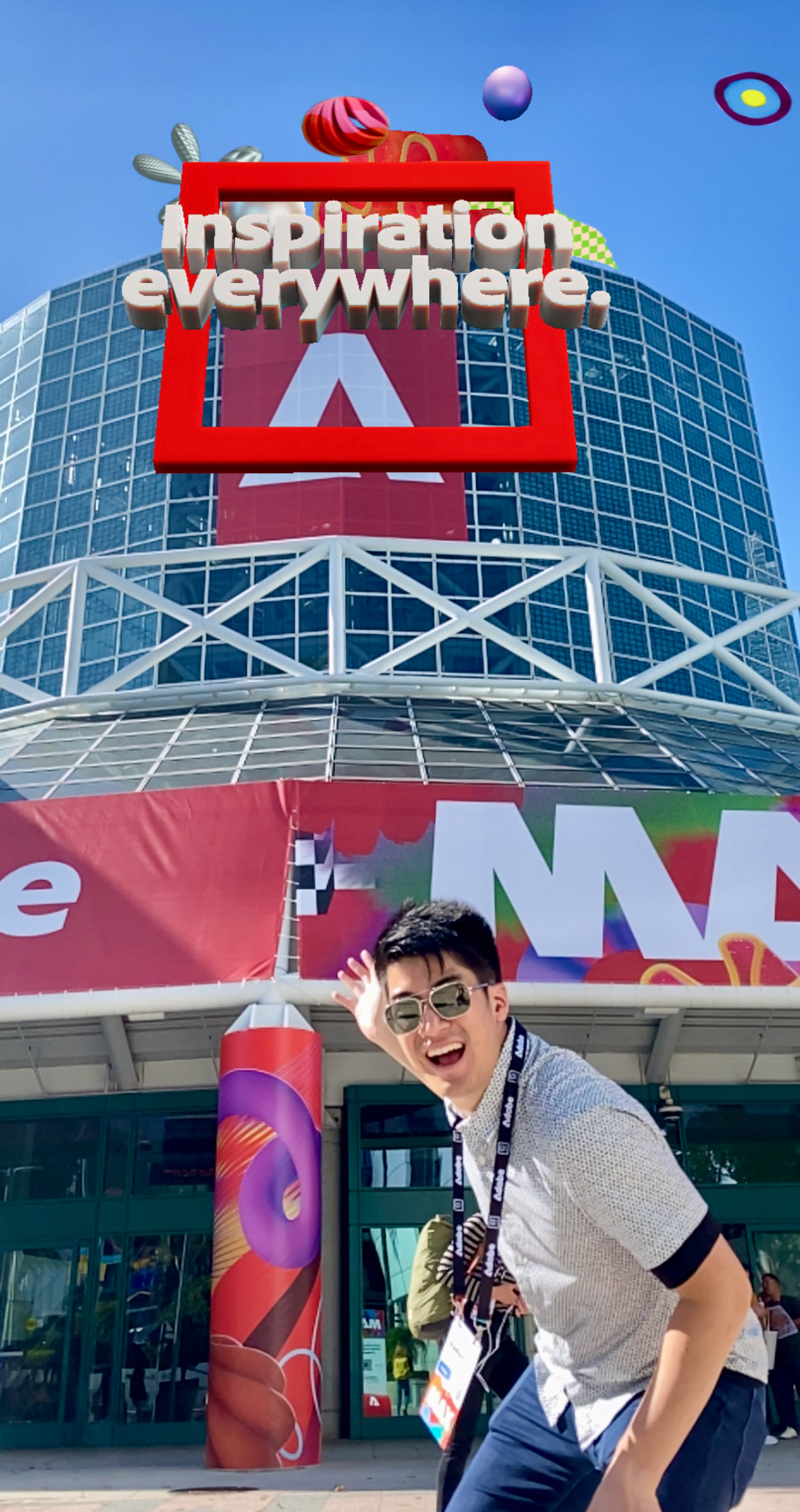Quick Tips for Designing Rich AR Experiences in Adobe Aero
You'll learn quick tips for how to create rich interactive AR scenes with Adobe Aero. The Trek Explorer example demonstrates how you can bring these ideas together to make a branded augmented reality experience
View Trek Explorer in Aero with your iOS device
View Trek Explorer in Aero with your iOS device
First Impressions
Controlling what a viewer sees when they open your experience
When publishing an AR experience, you may want the first thing your viewer sees to be a branded moment, or to communicate how much space is needed for the experience.
You can control what's shown when an experience is opened by using the visibility flag in the scene graph. When publishing, objects that are set as visible will show when the experience loads.
When publishing Trek Explorer, I set the holodeck background to be visible to help viewers know it's a desk scale experience, and to help them place it appropriately. I also set the Star Trek logo to visible, so that it would display as an opening brand element.



To make hidden elements appear after the experience is placed, you can reveal them with a Show action in the behaviors.
Guide the Viewer
Creating an intro moment with user guidance
In a new medium like augmented reality, your viewer may not know what to expect. It can be helpful to provide tips for how to use the experience.
For example, if your experience includes buttons that the viewer can tap, including guidance for viewers like an interactive 'Tap to Start' button at the beginning will give them clear expectations that some elements will be interactive.

Button Basics
Visual and audio feedback give users confidence
You can create buttons by adding an On Tap trigger to any asset. To make elements of your experience appear or disappear when a button is tapped, you can use the Show or Hide actions. The menu buttons in Trek Explorer use Show and Hide actions to control what elements are visible at any time.
UI feedback when tapping buttons is also helpful. For the menu buttons in Trek Explorer, I added a sound to the button by adding a parallel Play Audio action, and also


Facing the Viewer
Making things viewable at any angle
Augmented reality experiences are spatial, and sometimes people will walk or move around your scene. To make sure that elements are visible from any angle, you can add the Aim action to the asset. The Aim action will make an asset point at the viewer's screen - in this case the Billboarding toggle is turned on, so that the panel remains vertically oriented.



With these quick tips, you'll have some news tools as you make interactive experience in Adobe Aero. The Aero team is always looking for feedback on the product, if you have any suggestions, you can share them on social or on our UserVoice forum!




